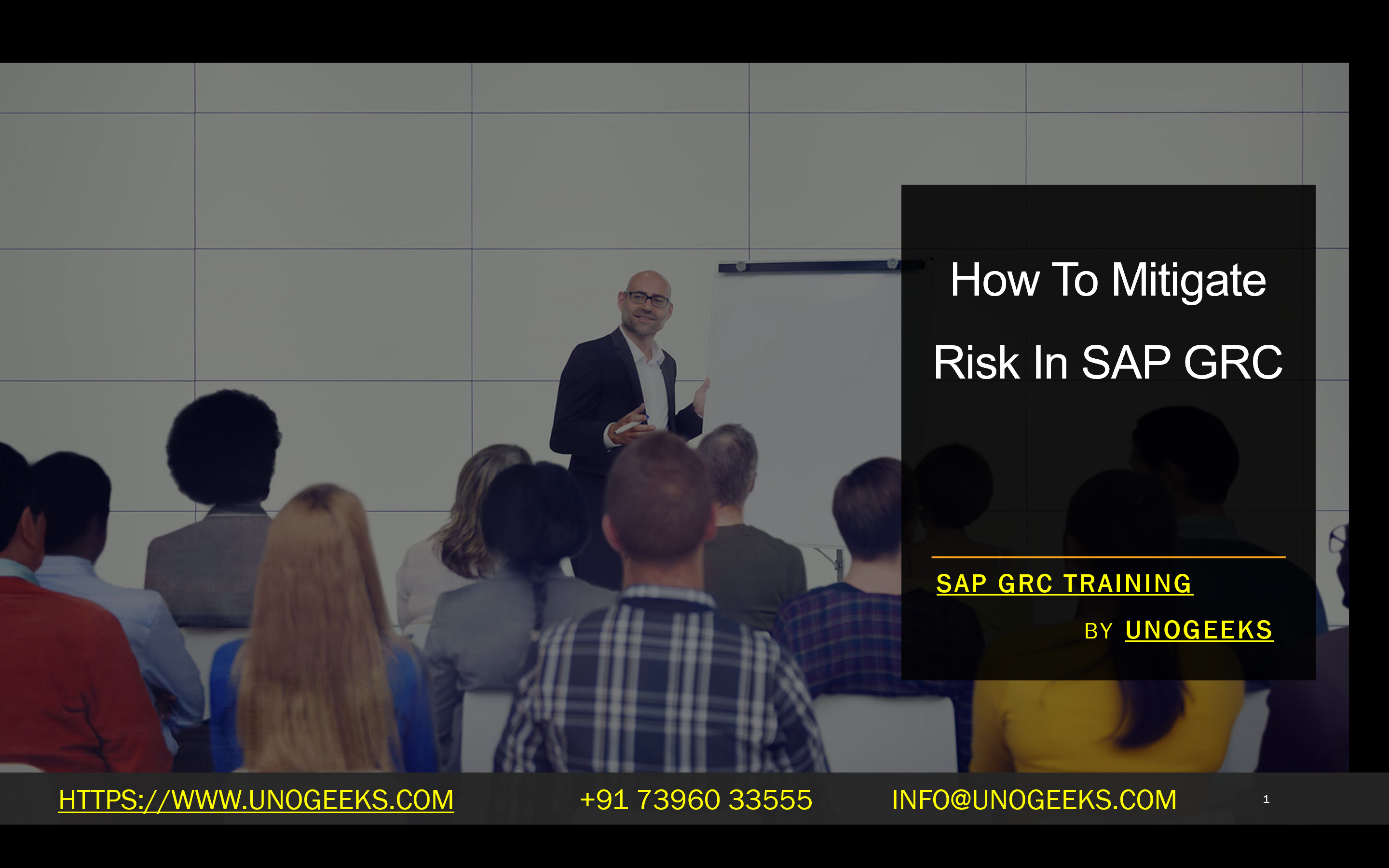How To Mitigate Risk In SAP GRC
How to Mitigate Risk in SAP GRC: A Comprehensive Guide
SAP Governance, Risk, and Compliance (GRC) solutions provide a robust framework for organizations to streamline their risk management processes. By utilizing SAP GRC tools, businesses can proactively identify, evaluate, and mitigate risks across their operations, ensuring better decision-making and robust internal controls. Let’s delve into the key strategies for mitigating risk using SAP GRC.
1. Start with Robust Risk Analysis
The cornerstone of effective risk mitigation lies in thorough risk analysis. SAP GRC’s Risk Management module supports this process in several ways:
- Risk Library: Develop and maintain a centralized library of potential risks relevant to your organization. Categorize risks by business processes, financial impact, and likelihood of occurrence.
- Automated Risk Assessments: Schedule regular risk assessments using SAP GRC tools. Automated assessments proactively highlight potential risks across user authorizations, business processes, and system configurations.
- Risk Prioritization: Identify high-priority risks based on their severity and likelihood. Focus your mitigation efforts on the most critical risk areas.
2. Leverage Mitigation Controls
Once risks are identified, it’s time to implement mitigation controls. SAP GRC provides the following:
- Mitigating Controls Library: Create and manage a library of mitigating controls to address specific risks.
- Control Design and Effectiveness: Carefully design mitigation controls to ensure they are adequate and effective. Regularly test and evaluate the performance of controls to ensure they are consistently reducing risk.
- Control Assignment: Assign mitigating controls to roles, users, or business processes where the related risk exists.
3. Automate Workflows for Efficient Mitigation
Workflows are the backbone of SAP GRC’s mitigation processes. Here’s how to use them to streamline the process:
- Automated Notifications: Set up automated notifications to alert control owners, approvers, and other stakeholders when mitigating controls are created, modified, or require review.
- Rule-Based Workflows: Define clear rules for escalation, approval, and periodic review of mitigation controls. This ensures timely action on risks.
- Workflow Monitoring: Use SAP GRC’s dashboards and reporting capabilities to monitor the status and effectiveness of mitigation workflows.
4. Focus on Segregation of Duties (SoD) Conflicts
SoD conflicts create a significant area of risk within SAP systems. Here’s how GRC helps reduce those risks:
- Automated SoD Analysis: SAP GRC Access Control offers robust SoD analysis, pinpointing users assigned conflicting or overly broad authorizations.
- Mitigation Plans: Design detailed mitigation plans for each SoD conflict identified. These plans may include compensating controls, revised authorizations, or process changes.
- User Provisioning Workflows: Integrate mitigation into standard access provisioning workflows to ensure timely and effective mitigation implementation.
5. Continuous Monitoring and Reporting
Risk mitigation is something you need to remember. SAP GRC helps support continuous vigilance:
- Real-Time Monitoring: Set up alerts or triggers to notify you of changes in risk status or the effectiveness of mitigating controls. This allows for quick responses to emerging risks.
- Risk Dashboards: Use SAP GRC’s customizable dashboards to gain visibility into key risk metrics, outstanding mitigation activities, and overall risk posture.
- Trend Reports: Analyze historical risk data to pinpoint recurring patterns needing further systemic process-level improvements.
Key Considerations
- Integration: Maximize the value of SAP GRC by integrating it with other business systems, enabling risk assessment based on live transactional and master data.
- Governance: Establish a clear governance structure for risk mitigation within your organization. Define roles, responsibilities, and communication channels for effective escalation and management.
Let SAP GRC Be Your Risk Management Powerhouse
By carefully leveraging the features and capabilities of SAP GRC, organizations can significantly enhance their risk mitigation strategies. Remember, effective risk mitigation is an ongoing journey – regularly review and refine your processes to remain resilient and adaptable within a dynamic risk landscape.
Conclusion:
Unogeeks is the No.1 IT Training Institute for SAP GRC Training. Anyone Disagree? Please drop in a comment
You can check out our other latest blogs on SAP GRC here – SAP GRC Blogs
You can check out our Best In Class SAP GRC Details here – SAP GRC Training
Follow & Connect with us:
———————————-
For Training inquiries:
Call/Whatsapp: +91 73960 33555
Mail us at: info@unogeeks.com
Our Website ➜ https://unogeeks.com
Follow us:
Instagram: https://www.instagram.com/unogeeks
Facebook: https://www.facebook.com/UnogeeksSoftwareTrainingInstitute
Twitter: https://twitter.com/unogeeks
